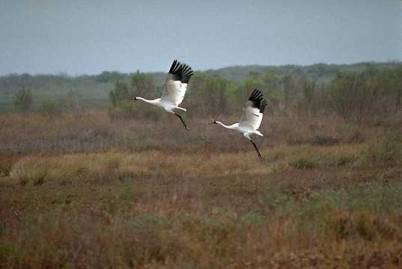
| Welcome | Contact | Getting Started | Site Map | Resources | 1 | 2 | 3 | 4 | 5 | 6 | 7 | 8 | 9 | 10 |
Unit 8-Biodiversity
Objectives |
- To develop a basic understanding of population dynamics.
- To examine the causes of species extinction.
- To explore methods for preventing species extinction.
- To review the key components of wildlife habitat.
- To examine the dynamics of wildlife movement and mortality.
- To explore methods for managing and conserving wildlife.

Photo credit: U.S. Fish and Wildlife Service
Readings
- Natural Resource Conservation (text)
- Chapter 15 (including Case Study 15.1 and Ethics in Resource conservation 15.3)
- Chapter 16 (including A Closer Look 16.1, Case Study 16.2, and Ethics in Resource conservation 16.3)
- Unit 8 Reading Study Guide
- Link opens new browser window.
Lecture Video
- Biodiversity for Forests and Farms
- Link opens streamed video clip. Running time 28 minutes. You'll need a media player to view this film. Plug-ins are linked to the "Getting Started" page.
Assignments
1. Participate in this week's graded class discussion
2. Work on your issue paper.
Issue papers are due by the end of NEXT week! If you have the time, I highly recommend that you have a draft of your paper proof-read by a staff member at the OSU Online Writing Lab. They will help you develop, organize, and revise your writing, free of charge.
Supplemental Research
The following are links to sites containing material related to this week’s lecture topics. They are provided for your information only and are not assigned reading.
- WildWorld
- A website that provides an interactive map of the world, highlighing areas identified by the World Wildlife Fund as being most critical for the conservation of biodiversity. Click on "Global 200": Priority Areas for Conservation to open the map; then click on highlighted areas to get more information about each ecosystem.
| |